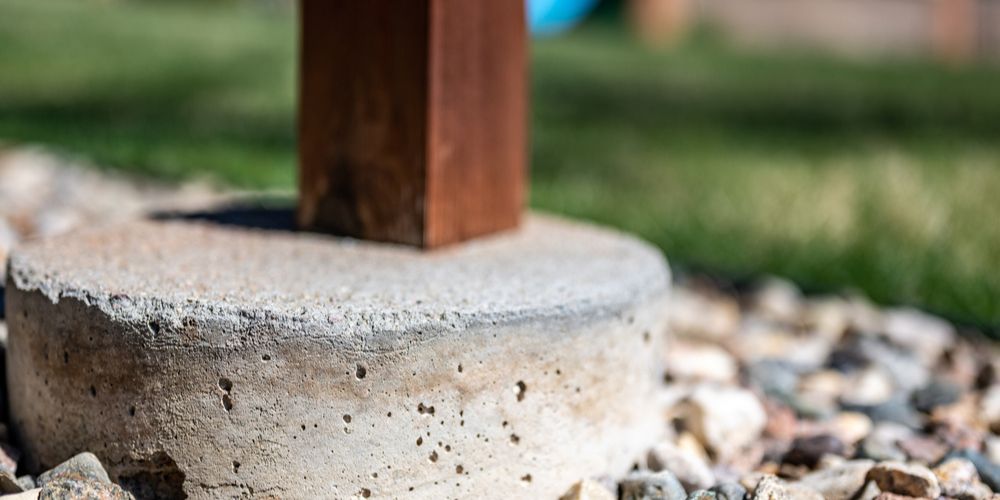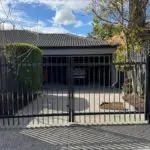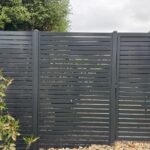Aluminium and steel fences are popular among homeowners for their durability, low maintenance, and gorgeous aesthetics. However, like any structure, they may require occasional repairs due to damage from weather, accidents, or general wear and tear. Knowing how to effectively repair an aluminum and steel fence can save you time and money while ensuring the longevity of your investment.

Understanding Aluminium and Steel Fences
Before delving into the repair process, it’s essential to understand the basic construction of aluminum fencing and steel fencing. Aluminum fences are lightweight yet sturdy, and resistant to rust and corrosion, making them ideal for various climates. On the other hand, steel fences are heavier and offer superior strength, providing enhanced security. Both types of fences typically consist of panels, posts, rails, and decorative elements.
Read more: Tubular Steel Fencing vs. Aluminium Fencing: A Comprehensive Comparison
Common Issues with Aluminum and Steel Fences
Aluminum and steel fences are favored by homeowners for their enduring strength, minimal upkeep, and exquisite aesthetics. These metal barriers often outlast many other outdoor structures. However, like any feature, they require occasional maintenance and repairs. Let’s explore some typical issues you may encounter:
1. Gate Malfunctions
- Squeaky or sticky gates: Applying a lubricant like WD-40 to hinges and moving parts can often resolve this issue. Regular lubrication is recommended to keep the gate functioning smoothly.
- Damaged gate components: If lubrication doesn’t help, inspect hinges for rust, looseness, damage, or wear. Replacement may be necessary.
- Bent or damaged gates: Visible signs of bending or damage may require repair or replacement.
- Damaged gate or fence posts: Posts that are damaged or improperly positioned can affect gate functionality. Leaning posts can cause the gate to misalign or become difficult to operate.
- Adjacent fencing issues: Problems with adjoining fencing, such as leaning or damage, can impact the gate’s operation. Addressing these issues promptly is crucial to prevent further damage.
2. Shifted or Uprooted Fence Posts
- Ensure posts are straight and level using a level.
- Properly set posts in concrete for stability.
- If posts have shifted or uprooted, resetting them in concrete may be necessary. This process involves removing the old concrete and reinstalling the post.
3. Damaged Rails or Fence Sections
- Loose fence rails can be supported with a T-brace.
- Entire fence sections may need replacement if one rail is damaged. Matching the replacement panel’s color to the existing fence is important for aesthetic consistency.
- Bent fence rails may require hammering back into shape or replacement, depending on the severity of the damage.
4. Rust and Dirt
- Rust prevention: Regularly inspecting for rust and addressing it promptly can prolong the fence’s lifespan. Stainless steel and wrought iron fences are particularly susceptible to rust, especially in areas exposed to heavy precipitation or salt water.
- Cleaning: Both aluminum and steel fences are washable. Power washing or scrubbing with soap, warm water, and a brush can remove dirt buildup or stains. Regular cleaning should be incorporated into your yard maintenance routine to maintain the fence’s appearance.
How to Replace Fence Gate Hinges

Your gate’s functionality hinges on its, well, hinges. If you’re experiencing issues with your gate, particularly with its hinges, here’s a step-by-step guide to tackling the problem effectively.
Materials Needed:
- Piece of wood
- Power drill
- Metal drilling bit
- Hinges suitable for your gate
- Screws appropriate for your gate
- Measuring tape
Step 1: Assess the Hinges
Before proceeding with the replacement process, ensure that the hinges are indeed the source of the problem. Sometimes, issues with gate posts can mimic hinge-related problems. Additionally, inspect each hinge individually to determine which ones require replacement. While you may initially plan to replace only a few hinges, removing them all allows for a thorough inspection to identify any underlying issues accurately.
Step 2: Remove Existing Hinges
To prevent damage, place a piece of wood under the gate door to support its weight during the removal process. Using a power drill, carefully remove all hinges from both the gate and the post. Take caution to avoid causing the gate to sag, as this could lead to further damage.
Step 3: Inspect the Hinges
Upon removal, inspect the hinges for common issues that may have contributed to their deterioration. These may include:
- Inadequate durability for the gate’s weight or usage frequency
- Lack of outdoor suitability, leading to corrosion or damage over time
- Improperly sized screws or other hardware
Once identified, ensure you acquire the correct number of hinges, ensuring they are of the appropriate type and size to prevent the need for future replacements.
Step 4: Install New Hinges
Using a measuring tape, mark the locations for drilling new holes to accommodate the replacement hinges. Use a power drill equipped with a metal drilling bit to create the necessary holes in both the gate and the post.
Carefully attach the new hinges to their respective positions on the gate and post, ensuring they are securely fastened. Utilize wood pieces for added stability during the installation process, mitigating the risk of damaging the hinges.
How to Set Posts in Concrete or Replace Concrete Set Posts

Posts serve as the foundation of a fence, providing essential stability and support. If you’re encountering issues with your metal fence posts, it’s crucial to ensure they have a solid concrete foundation. Here’s a guide on how to set or replace your post’s concrete foundation:
Materials Needed:
- Wrench or appropriate hand tool
- Shovel
- Sledgehammer
- Post hole digger
- New cement
- New fence post (if needed)
- New hardware (if needed)
Step 1: Remove Fence Attachments
Begin by unbolting or unhooking the fence rails from the posts using a wrench or the appropriate hand tool. The specific tools required will depend on your fence’s setup.
Step 2: Remove the Post
Use a shovel to excavate the area around the post. If the post is set in concrete, employ a sledgehammer to break up the old concrete and remove the post.
Step 3: Prepare the Post Hole
With either the shovel or a post-hole digger, prepare or re-dig the hole for the new post. Ensure the hole is approximately 10 inches wide and 2 to 3 feet deep, with the depth determined by the post type and local frost line regulations. The hole should also have a bell-shaped profile, wider at the bottom for added stability.
Step 4: Install or Replace the Post
Place the post into the prepared hole. If the existing post is still in good condition, it can be reused; otherwise, install a new post.
Follow the manufacturer’s instructions to mix and apply concrete to secure the post in place within the hole. Use a level to ensure the post is centered and plumb, as proper alignment is crucial for structural integrity.
Step 5: Reattach the Fence
Allow the concrete to cure fully according to the recommended drying time provided by the manufacturer.
If desired, add soil or grass over the concrete surface to conceal it.
Reattach the fence rails using the appropriate hardware. Depending on your fence’s configuration, you may need new hardware for reinstallation, although existing hardware can be reused if it’s in good condition.
How to Replace an Aluminum or Steel Fence Section

Aluminum and steel fencing often stand as stalwart guardians of your property. However, even these mighty guardians can succumb to the wear and tear of weather and time, occasionally requiring the replacement of sections. Here’s a guide on how to restore your champion fence to its former glory:
Materials Needed:
- Reciprocating saw
- Drill/driver
- Self-tapping metal screws
- Railing brackets
Step 1: Remove the Damaged Panel
Begin by using a reciprocating saw to carefully cut the damaged panel on the side where it connects to the post.
Next, remove the screws or fasteners from the opposite side of the panel. With the fasteners removed, gently pull the panel towards you to free it from the fence, and set it aside.
Step 2: Insert the New Panel
Insert the rails of the new panel into the corresponding slots on the posts. Ensure a snug fit by adjusting the position as needed.
On the opposite end of the panel, use the reciprocating saw to trim the rails to the correct length, matching the dimensions of the existing fence.
Step 3: Secure the New Panel
Attach railing brackets to the trimmed end of the rails. Position the brackets evenly along the length of the rails for optimal support.
Using self-tapping metal screws, secure the brackets to the posts on the cut end of the panel. Ensure the screws are tightened securely to provide stability.
Finally, reattach the screws or fasteners on the opposite side of the panel. If necessary, use new screws to ensure a secure connection between the panel and the fence.
How to Remove Rust from Metal Structures

Rust is a common concern for any metal structure, including fences, and if left untreated, it can spread and cause damage. However, by addressing rust early on, you can prevent further corrosion and prolong the life of your metal fence. Here’s a guide on how to effectively remove rust from your fence:
Materials Needed
- Sandpaper or wire brush
- Paint sprayer or paint brush
- Rust-inhibiting primer
- Exterior enamel paint
Step 1: Sand Rust Spots
Begin by using sandpaper or a wire brush to scrub off the rust from the affected areas of your fence. This step removes the surface oxidation and prepares the metal for further treatment.
Step 2: Apply Rust-Inhibiting Primer
Once the rust has been removed, apply a rust-inhibiting primer to the affected areas. You can use a paint sprayer for faster application or a paintbrush for more precise coverage. The primer creates a protective barrier that prevents further rusting and prepares the surface for painting.
Step 3: Spray or Paint on Exterior Enamel
After the primer has dried according to the manufacturer’s instructions, spray or paint on an exterior enamel paint. This paint not only adds a protective layer to the metal but also enhances the appearance of your fence. Again, you can use a paint sprayer for larger areas or a paintbrush for smaller sections and intricate details.
Cost to Repair Aluminium and Steel Fencing
The cost of repairing an aluminum or steel fence can vary significantly based on various factors such as the extent of repair needed, materials required, local material prices, labor costs, type of fence, and its size, height, and design. Here’s an average cost guide to provide you with a ballpark figure:
- Average fence repair cost: $495
- Repair cost range: $50 – $1600
- Average steel fence repair cost: $500
- Average aluminum fence repair cost: $545
- Average steel fence repair cost per linear foot: $45
- Average aluminum fence repair cost per linear foot: $37
It’s essential to address any issues with your fence promptly, as delaying repairs may lead to more extensive damage, potentially requiring a full fence replacement.
Read more: [2024] How Much Does Aluminium Fencing Cost?
When deciding whether to repair or replace your aluminum or steel fence, consider the following questions:
- How extensive is the damage? If the damage significantly impacts the fence’s structure or functionality, replacement may be necessary.
- How widespread is the damage? Repairing or replacing specific sections may suffice if the damage is localized. However, if multiple areas are affected, replacement might be the better option.
- How old is your fence? Older fences, especially those over 50 years old, may require replacement due to ongoing issues and deterioration.
- How was it damaged? If the fence is not suitable for its intended purpose or is prone to recurring damage, replacement with a more appropriate fence type may be advisable.
Additionally, consider other factors such as insurance coverage, warranty options, the potential contribution from neighbors if the fence is shared, and your budget constraints.
FAQ About How to Repair Steel and Aluminium Fencing
Here are some frequently asked questions (FAQs) about aluminum and steel fencing, along with their answers:
- What are the main differences between aluminum and steel fencing?The main differences between aluminum and steel fencing lie in their material composition, strength, durability, maintenance requirements, and customization options. Aluminum fencing is lightweight, rust-resistant, and low maintenance, while steel fencing is heavier, stronger, and requires more maintenance but offers enhanced security.
- Which is better, aluminum or steel fencing?The choice between aluminum and steel fencing depends on factors such as budget, desired aesthetics, maintenance preferences, and security needs. Aluminum fencing is often preferred for its low maintenance and customization options, while steel fencing is chosen for its strength, durability, and security features.
- How long do aluminum and steel fences last?Both aluminum and steel fences can last for several decades with proper maintenance. Aluminum fencing typically has a lifespan of 30 years or more, while steel fencing can last 30 years or longer, depending on maintenance and environmental factors.
- What maintenance is required for aluminum and steel fencing?Aluminum fencing requires minimal maintenance and typically only needs occasional cleaning with soap and water to remove dirt and debris. Steel fencing requires more maintenance to prevent rust and corrosion, including regular inspections, cleaning, and applying protective coatings.
- Are aluminum and steel fences suitable for security purposes?While both aluminum and steel fences can provide some level of security, steel fencing is generally considered more suitable for high-security applications due to its strength and durability. Steel fences are often used in commercial and industrial settings where enhanced security is essential.
- Are aluminum and steel fences suitable for residential properties?Yes, both aluminum and steel fences are commonly used in residential settings for their durability, aesthetics, and functionality. Homeowners can choose between various styles and designs to complement their property’s architectural style and landscaping.
- Are aluminum and steel fences environmentally friendly?Both aluminum and steel fencing can be considered environmentally friendly options. Aluminum is a recyclable material, and many aluminum fences are made from recycled content. Steel can also be recycled, reducing the need for new raw materials and minimizing environmental impact.
When to Hiring a Fencing Professional in Your Area
While tackling fencing repairs as a homeowner DIY project is feasible, it’s not without its challenges. It demands careful planning, thorough preparation, and considerable patience. If these aspects seem daunting, there’s no need to fret. Skilled fencing professionals are readily available to assist with a friendly hammer in hand.
Whether it’s due to the complexity of the repairs, lack of time or expertise, safety concerns, legal issues, or specialized requirements, a fencing professional can provide the expertise and assistance needed to ensure that your fence is repaired properly and to your satisfaction.
If you’re unsure where to start or need assistance finding a reputable fencing contractor, don’t hesitate to contact the Pentagon today. Our expert is happy to answer all your questions and give you advice based on your special needs.




